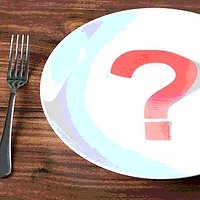A Vision for Food Integrity and Social License

When people think about food safety, they tend to gravitate to ideas like handling practices, avoiding contamination, reducing the risk of foodborne illness and safeguarding the consumer. They perhaps think of safety as the ultimate precompetitive measure of quality in food.
There is a good reason for this. The burden of foodborne illness is substantial. For example, in the United States, one person in six suffers from a foodborne illness every year. Of those, nearly 130,000 are hospitalized, and 3,000 die from their illness. The numbers in Canada are comparable (one in eight suffering from foodborne illnesses in 2013). And for these and other reasons, over the years governments have imposed increasing regulation and stricter enforcement mechanisms.
For food businesses, the pattern on food safety for decades has been one of responding to regulators while maintaining higher standards. This is a strongly embedded culture throughout the food industry.
Given the growing complexity of our global food system, inspection and containment actions most often arise in response to a specific incident. It is simply impractical to inspect all food or reduce the risk of a foodborne incident to zero. Even the most ardent proponent of regulation realizes that one cannot ‘inspect in’ food safety, any more than automotive companies recognized decades ago that you cannot ‘inspect in’ quality on a vehicle or part.
Therefore, there is an increasing global trend and support from companies and regulators for more proactive approaches to food protection. There is growing realization among food professionals that “food safety” is only part of the larger and richer vision. Leading practitioners in food companies and governments are now thinking and talking about food protection.
So what is this? And why is it important?
 Food protection is an encompassing phrase that embraces food security, food defense, food sustainability and food safety. Food protection is considered the goal; the other four elements contribute in their own way to this outcome: They are the means to achieve the goal. Some may find this simply word-play and that semantics do not alter the concerns about protecting food.
Food protection is an encompassing phrase that embraces food security, food defense, food sustainability and food safety. Food protection is considered the goal; the other four elements contribute in their own way to this outcome: They are the means to achieve the goal. Some may find this simply word-play and that semantics do not alter the concerns about protecting food.
But words are important. By talking about food protection, we broaden thinking about what we can do to improve the safety, quality, sustainability, defense and overall integrity of our food and the system that delivers it. This ‘systems thinking’ approach is the basis for creating more effective protection of food.
We are starting to now understand that by historically focusing primarily on food safety, we have tended to create a reactive mindset and have left unexplored real opportunities to systemically address a number of other important food integrity issues. The argument is that if we do not “deal with the big picture,” then by default, we address disjointedly the issues of food fraud, food waste, sustainability and food security. We end up applying isolated strategies and tactics with no cohesive use of limited resources.
By examining food integrity in a broader vision and context, we can more effectively strengthen our food system by leveraging activities that address more than one issue at a time. This helps make our food system more competitive, more reliable, more sustainable, more efficient and, yes, safer. So the next questions relate to the ‘connectors’ between the five points of our model.
In short, if we think of food safety as an important contributor to a more comprehensive picture of what can really drive improvement in the industry, food protection, then what is its connection with food sustainability? What about with food security or food defense? We will open up a dialogue on these and other connections to address issues of food safety, food security, food defense, sustainability and food integrity. If food system partners change their thinking, then they change their behavior and practices.
By thinking differently, we can affect the way we achieve results.
Brian Sterling is president/CEO of SCS Consulting.
>
Looking for quick answers on food safety topics?
Try Ask FSM, our new smart AI search tool.
Ask FSM →








